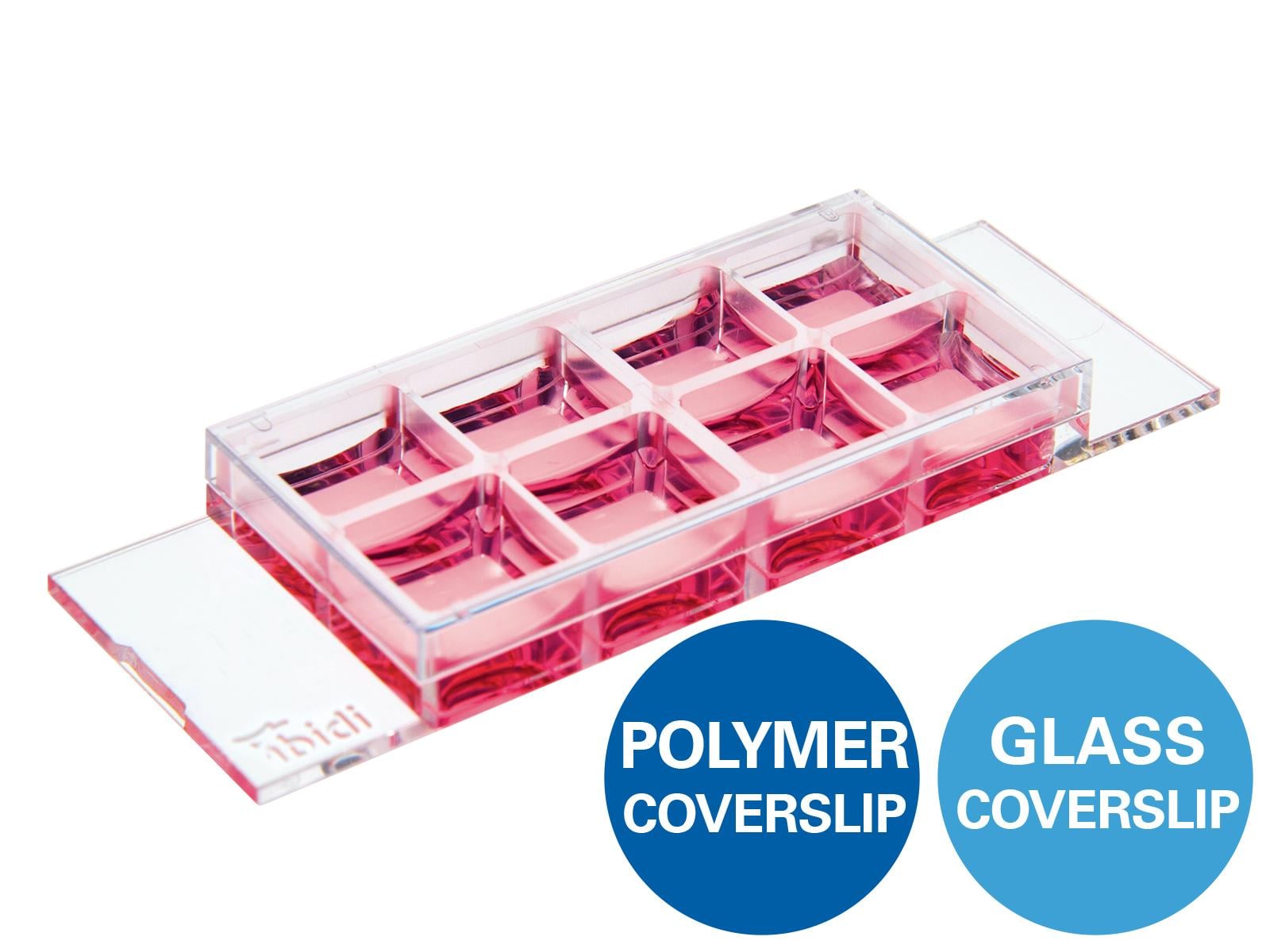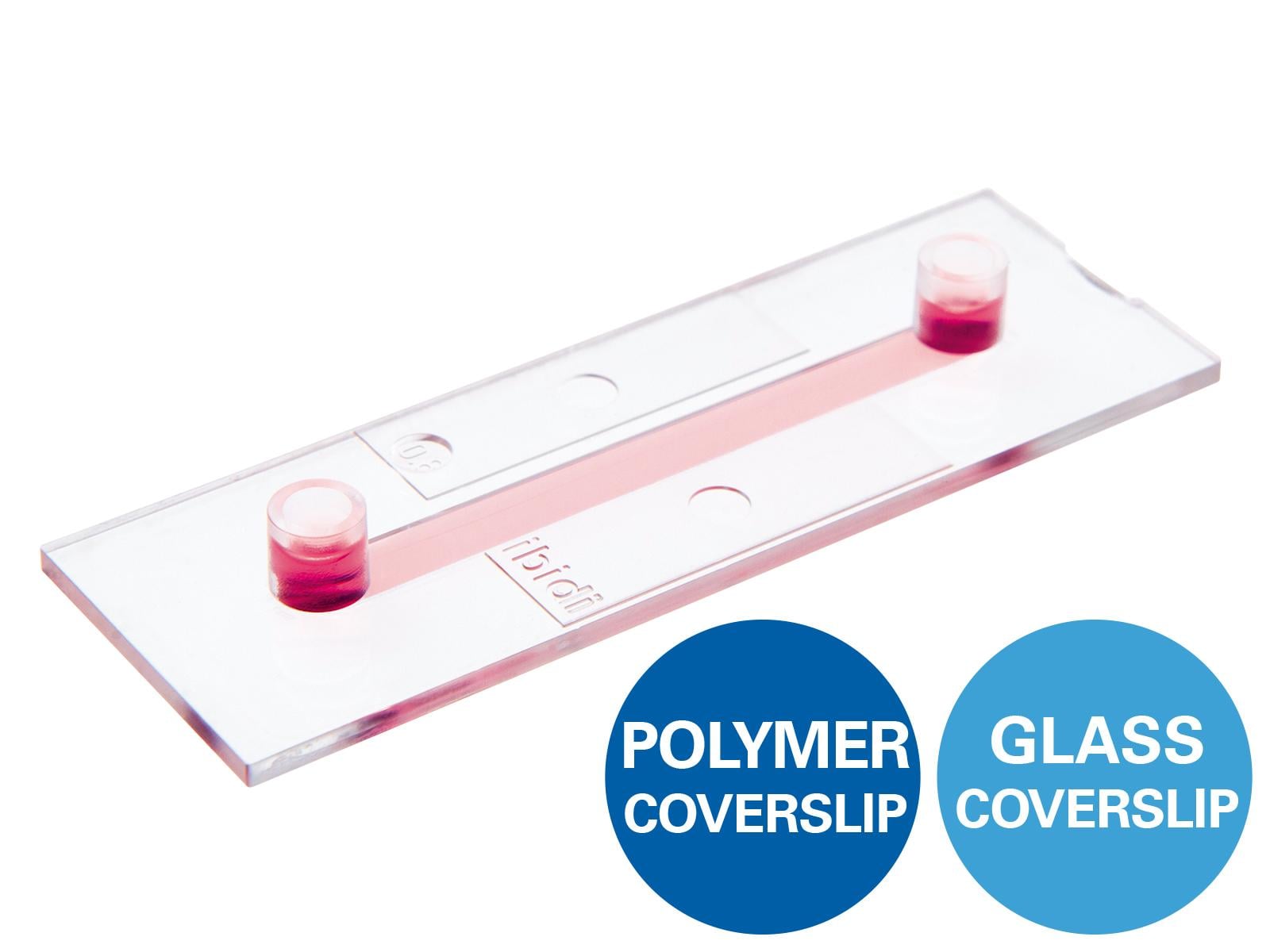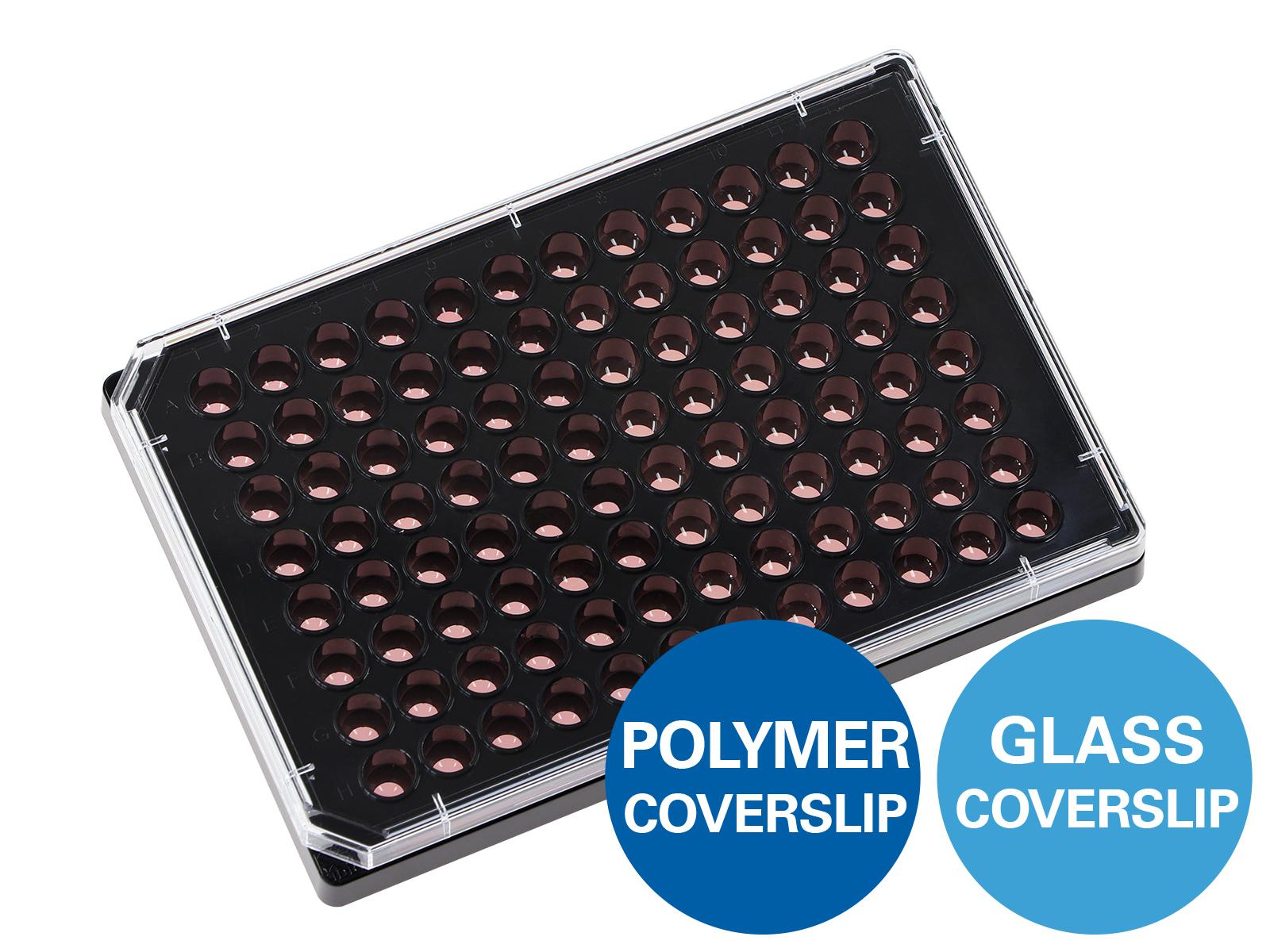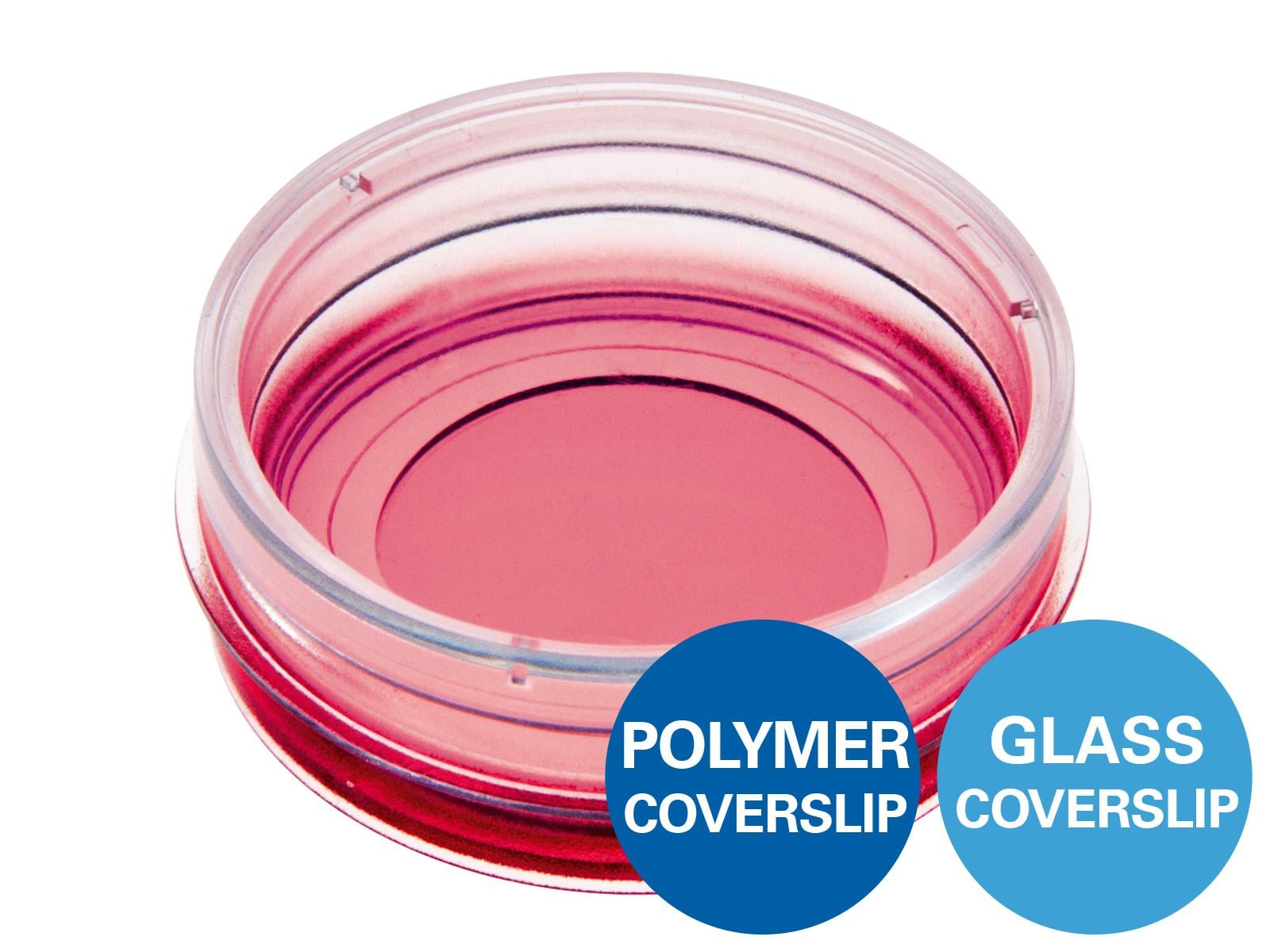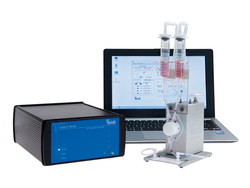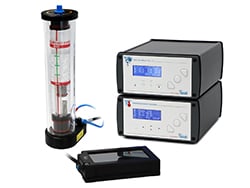Cell Culture: Parameters for Healthy Cells
Many factors determine the success of culturing cells by keeping them healthy and viable. Depending on the cell type and the experiment, these parameters must be determined and carefully supervised:
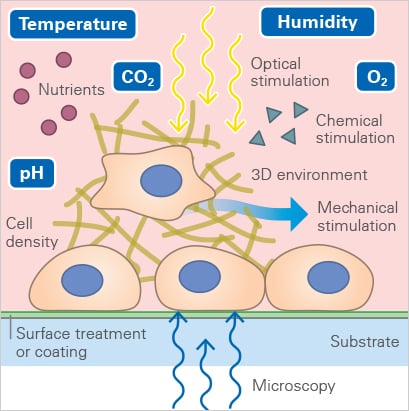
Cells need to be constantly surrounded by a suitable culture medium that supplies the cells with all the nutrients they need to be vital.
Many specialized media are available on the market for a variety of cells and experimental needs, such as Dulbecco’s Modified Eagle Medium (DMEM) or Roswell Park Memorial Institute (RPMI) medium. Depending on the experiment and the cell type, the medium often has to be supplied with different substances (e.g., with fetal calf serum/fetal bovine serum (FCS/FBS) that delivers essential growth factors).
In order to guarantee optimal nutrient supply and constant environmental conditions, the medium needs to be changed at defined intervals (e.g., daily).
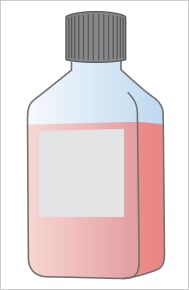
Many cell types, such as endothelial or epithelial cells, are in contact with moving fluids. This liquid flow causes shear stress, a mechanical force that influences the cell morphology, cell polarization, and cell behavior in many ways.
When cells are cultured without flow, shear stress-dependent cellular changes cannot be considered. Cell culture under flow simulates this mechanical stimulus, and induces a more physiological, in vivo-like behavior.
Further mechanical influences that should be considered when working with cells are compression (e.g., in cartilage cells) or strain.
Get more information about how to plan and perform a flow experiment in our application chapter here.
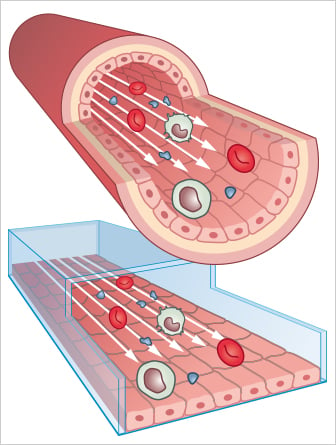
ibidi Solutions
The ibidi Pump System allows for the defined shear stress simulation of various physiological conditions (e.g., continuous unidirectional, oscillating, or pulsatile flow). Combined with the ibidi Channel Slides, it is ideally suited for live cell imaging of cells under flow and immunofluorescence for analyzing shear stress response. |
|
Carbon Dioxide (CO2) Levels and pH of the Medium
A pH of 7.2–7.4 provides optimal growth conditions for most mammalian cells. The ambient carbon dioxide (CO2) levels are an important parameter for cell culture, since they influence the pH of most cell culture media. They have to be kept as constant as possible within the incubator (5% CO2 is the most commonly used concentration). Most commercial cell culture media contain phenol red as a color indication for the pH. If the color turns yellow (acidic) or purple (alkaline), the medium should be replaced.
Find more details about how CO2 levels influence the pH of the cell culture medium here.
Temperature
The environmental temperature strongly influences the metabolism and the activity of cells. Temperature changes affect cell adhesion, protein expression, proliferation, and many more cellular parameters. A temperature of 37°C is optimal for mammalian cell culture, including human, mouse, and rat cells. Cells from non-mammalian organisms, such as chick or yeast, require different temperatures. Plant, fish, and insect cells can be cultured at room temperature.
Because most cell types do not tolerate long changes in temperature, all working steps in the hood have to be carried out as quickly as possible (while maintaining sterility and precision). In addition, cell culture media and reagents need to be prewarmed before use (e.g., in a water bath).
ibidi SolutionThe ibidi Stage Top Incubation Systems provide a stable and homogeneous temperature for live cell imaging experiments. The temperature is smoothly changeable and can easily be adapted to the requirements of the investigated cell type. |
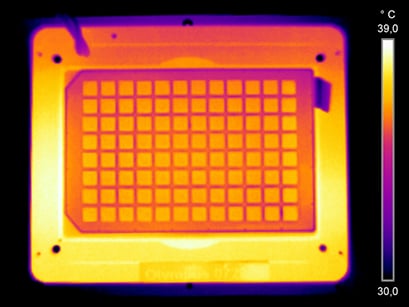
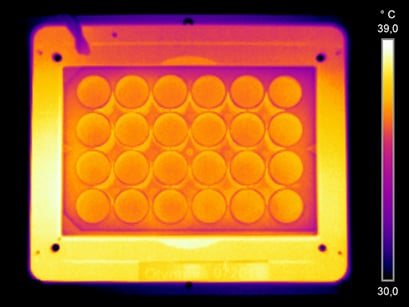
Stable and consistent temperature distribution in every well of multiwell plates in the ibidi Stage Top Incubation System. Images were acquired with a FLIR thermal camera.
Humidity and Evaporation
Constant levels of salts, nutrients, and other cell culture medium components are essential for maintaining reproducible cell behavior. They are also crucial for consistent and reliable in vitro results. Any evaporation from the cell culture vessels increases the substance concentration in the medium in an undefined way.
Cell culture vessels in the CO2 incubator are normally cultivated in an open system (e.g., gases can diffuse through the cell culture plastics), and are therefore in an equilibrium with the surrounding air. In standard CO2 incubators, the humidity is created by evaporation from a water tray. Optimally, the relative humidity (RH) within an incubation system should be within the range of 90%–95%.
When small cell culture vessels with low volumes are used, it might be advisable to place them in a wet chamber.
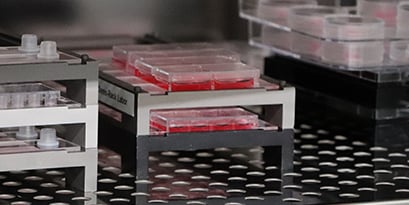
ibidi Solutions
ibidi’s Patented Humidity Control |
|
Oxygen (O2) Levels
The O2 concentration is another important parameter that should be controlled in cell culture assays, particularly when working with tumor cells, stem cells, or when analyzing the effects of hypoxia. The in vivo conditions of more or less all cell types have oxygen concentrations that are far below the oxygen concentration in ambient air.
Learn more about the importance of oxygen levels in cell culture assays here.
ibidi SolutionFor hypoxia assays, the CO2/O2 versions of the ibidi Stage Top Incubation Systems allow for the precise control of the oxygen levels in your cell culture vessel. The ambient O2 level can be controlled within a range of 1%–21%, and can easily be adapted to the experimental requirements. |
To make accurate O2 measurements, we recommend using one of the systems from ColibriPhotonics and preSens GmbH.
Read on and learn more about Cell Handling, Prevention of Contaminations, or Cell Preparation for Imaging.

